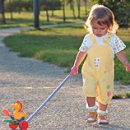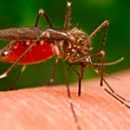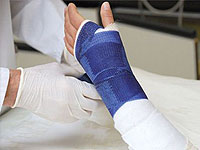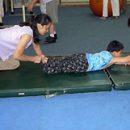What is transverse flatfoot? How treatment and prophylaxis of transverse flatfoot? Answers to these questions you will find in the article.
Content
But every patience, as you know, comes end. What are the heels
and shoes if «bone» ugly drank, makes stop wider
And, in the literal sense, the word does not give step to step. Cause
such a deformation of the foot - transverse flatfoot.
Flatfoot, reasons flatfoot
Our
Stop consists of a variety of bones connected by joints, ligaments
and tendons. Ideally, tie bones (to which phalanxies are attached
toes should be placed in parallel, and hold
them in such a ligament position. In practice, most often the bone is diverged
Veryoorny, which is permissible only to a certain limit.
When
The divergence of tie bones excessively, the following happens: the first
Tweet bone to which the thumb is attached, strongly
deviates from the rest and thrust of the muscles of the foot is redistributed.
Tendon that took place along, following the rejected tall
bone changes the direction and begins to pull the finger outward. Similar
Large finger deviation physicians called Hallux Valgus. As a result
shifts and bulges out the head of a tie bone. Since shoes
constantly comes into contact with this place, there is a grazing, then
The joint is inflamed. As a result, bone-cartilage develops
The growth that people are called «Bone».
More often
Total transverse flatfoot due to hereditary weakness
muscular-ligament. And inheritance goes on the female line.
In men, such a kind of flatfoot develops less frequently - mostly
As a result of injury. The ratio of female and men - 8: 2.
Aggravates the case «Standing» work (loading during the day
on the front of the foot), uncomfortable shoes.
Treatment and prevention flatfoot
Many
hopes for the miraculousness of the supinator who redistributes
Stop load. However, the lack of a supinator is that it is only
Softens the symptoms of the disease without eliminating the cause. How to strengthen
Muscles?
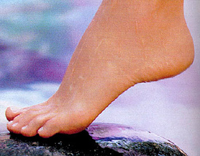
In the case of longitudinal flatfoot (when there is no foot
steep arch and legs quickly get tired) the result is achieved by the strengthening
Muscles of the foot and tibia with gymnastics. Unfortunately, with transverse
Flatteill situation Other. Controlled muscles responsible for development
illness, very little. Nevertheless, strengthening exercises are useful. If
combine gymnastics for legs (turns of the foot to the right, left, up, down,
Circular movements) with daily warm baths and stop massage,
That is the growth of italic «bones» You can suspend for a long time.
Popular
And such a recipe: Apply on «bone» Mesh of 10 percent solution
iodine. It really helps to remove inflammation and thus
stops the growth of cartilage tissue. Just do not use more
Concentrated iodine solution, otherwise you can get a skin burn. Also
refers to compresses with acetic essence - unfortunately
good they do not lead.
Today a lot of ointments are produced,
Eliminate the inflammation of the joints and improving food tissues. But better,
If the ointment will select an orthopedist specialist.
With both formas
Flatflake is useful to wear shoes at a low heel (up to four
centimeters). On the day it is also recommended to change shoes.
Stay at work in boots is uncomfortable and harmful. Always keep
Convenient change «Breathable» shoes.
If the cartilage fabric
on the head of the tie, turns into bone, «bone» declares
About yourself constant pain. Here already nothing but the operation will not help.
Surgeons
For a long time, the search for the method for correcting the foot. Today they are not less
three hundred. The essence of the most common technology is as follows: Surgeon
«Reframe» The entire front of the foot - removes the cartilaginous growth
on the head of the tie, lines the bone itself, pulls up
tendon so that the thumb is held in the literal position.
The correct position of the bones is fixed inside the foot of the special
Lavsanova ribbon. The operation is quite complicated and requires subsequent
Long rehabilitation. However, the effectiveness of such treatment «bones»
very high, and the risk of re-deformation is practically absent.

